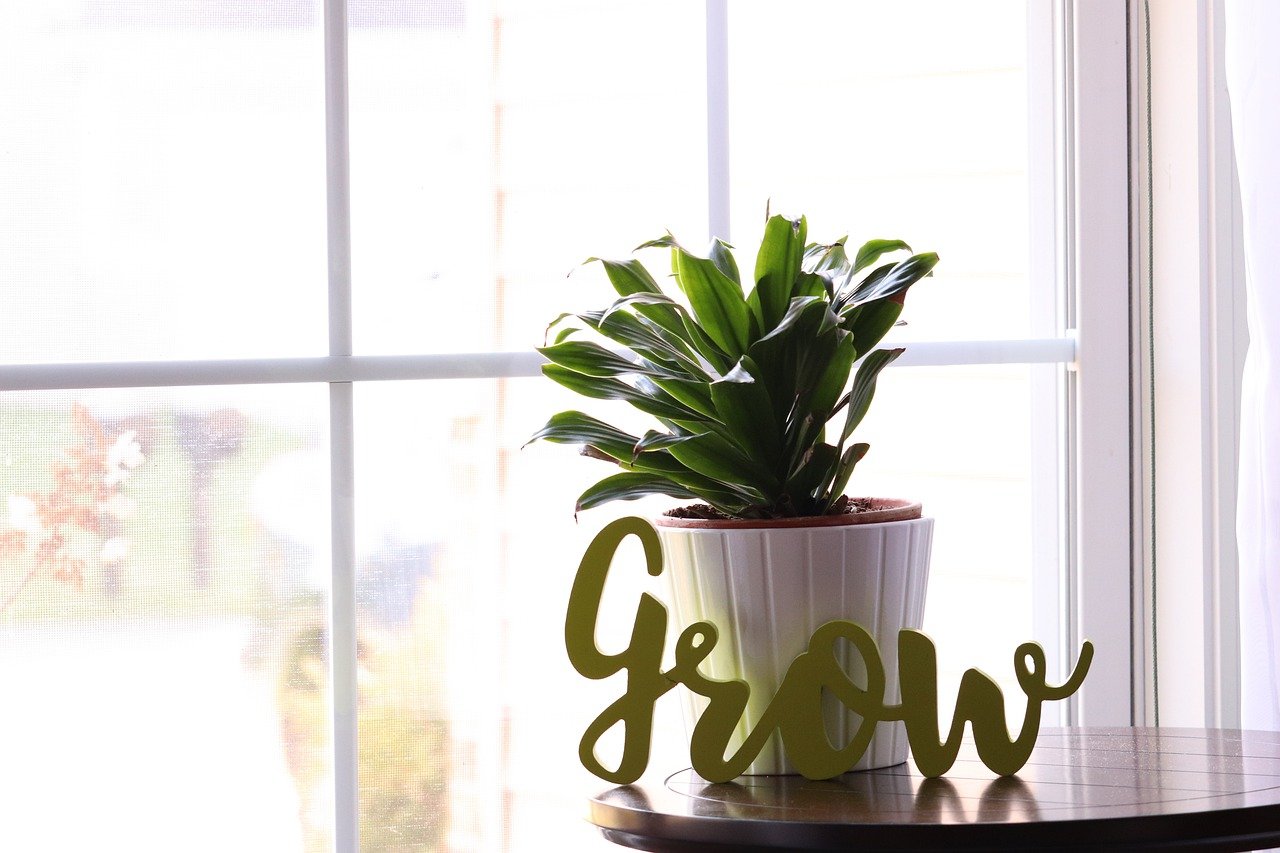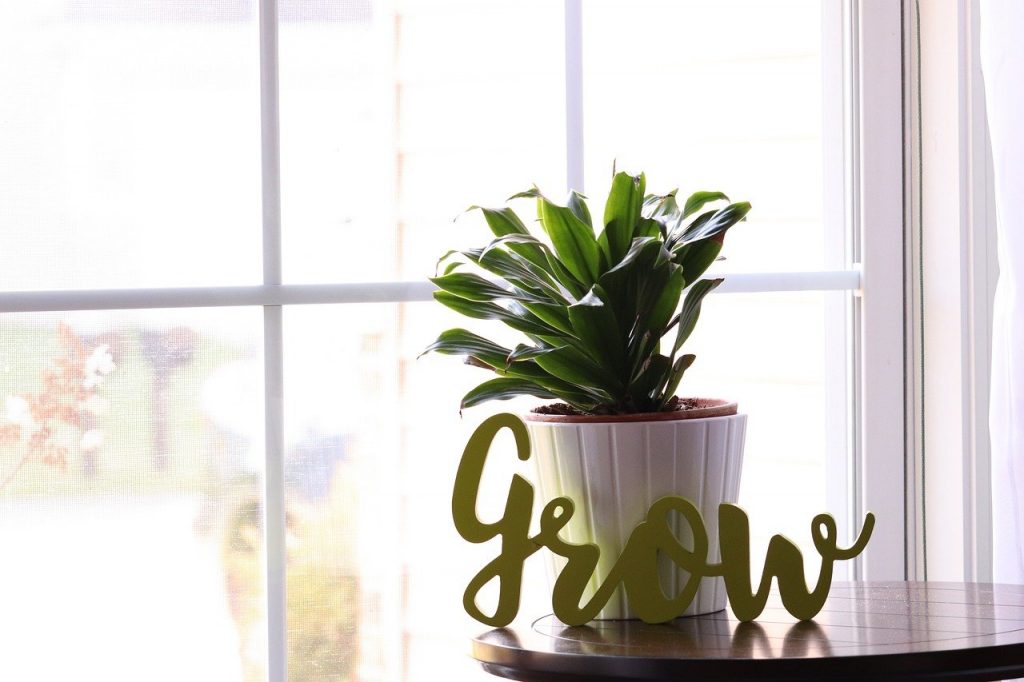
Help your plants stay healthy and grow strong with timely fall pruning. Photo: Epsita M / Pexels
You sure can’t tell by the San Diego weather, but fall 2020 is in full swing. You might not be feeling it, but Nature knows. Even your indoor plants know it’s fall. They also know winter is coming.
Your indoor plants have been busy all spring and summer using the sun’s energy along with your regular care and watering to focus on healthy growth. Now they’ll be ready to settle in for the winter and rest.
To preserve your good health, you visit your doctor every year to get a checkup. It helps you catch any health problems early so they’re easier to treat. The fall season is the perfect time for you to give your plants their annual checkup for the same reason.
Follow the same checklist our Good Earth Plant Company plant stylists use to keep our clients’ plants their healthiest and looking their best.
Pruning Like a Pro Plant Stylist
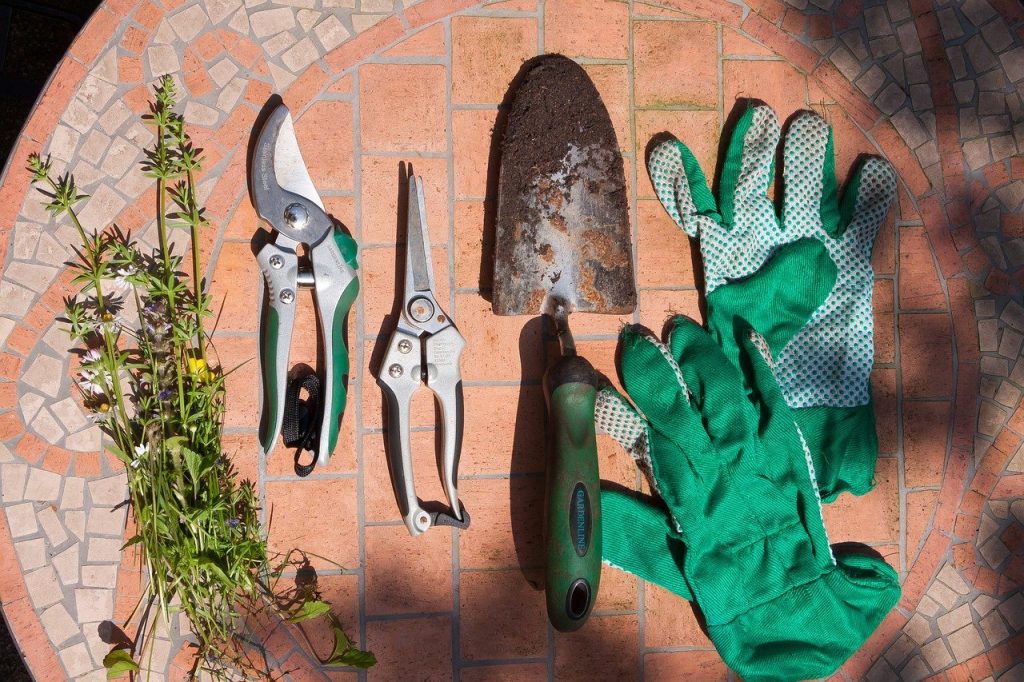
Get your tools ready including sharp, clean shears. Photo: Pexels
My mom was my original plant mentor. She has always been a reluctant pruner and it’s difficult for her to remove leaves and stems she has watched grow. But that’s a sign of a good gardener (it’s her only downfall). How do you get a green thumb? By pinching back plants and getting chlorophyll under your thumbnail!
I also asked my friend and colleague Linnaea Newman, a member of the Interior Plantscaping Hall of Fame, for her best plant pruning tip. “If you cut off what’s unhealthy, what remains is more healthy,” Linnaea told me. Keeping it simple is always right.
First, get your tools ready. You will need a good pair of pruning shears. But a sharp pair of sewing scissors will also work. Be sure they are clean and dry. You can use rubbing alcohol to clean the blades. Disease is easily spread on contaminated pruners and scissors. To be extra vigilant, use bleach or rubbing alcohol between plants.
Use a spray bottle with water and a gentle cloth (or old socks over your hands work really well) so you can gently wipe leaves clean of dust. pests, and debris. Carry a bucket or trash bag to gather trimmings and dispose of them responsibly.
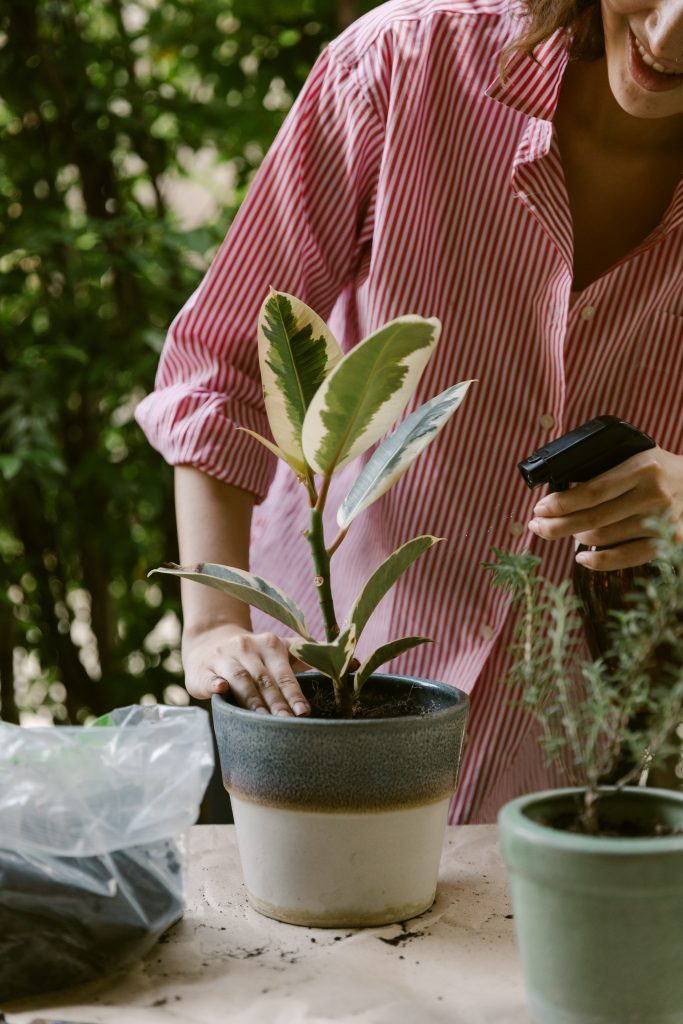
Use a water bottle to spray play leaves and clean them. Photo: Ketut Subiyanto / Pexels
Pruning helps your plants by removing branches and leaves that are diseased, damaged by pests, or dead. It also shapes them.
Pruning is also one of the techniques employed in IPM (integrated pest management). Simply removing an infected branch can eliminate an entire infestation.
Removing dead growth is a good start and the bare minimum maintenance. Cut as close as possible to the base of a brown or yellow stem. Look for a leaf node. These are bumps on the branches or stems. New growth starts at these nodes.
If only a few individual leaves are brown or yellow, it’s ok to gently pull them off without removing the whole stem. But if you have a lot of yellow leaves, you have a problem and need to fix it or you’ll just end up with more yellow leaves. The usual suspects: too little sunlight, or overwatering. Read our recent blog post about Watering 101.
Remove fallen leaves on the soil surface. Pests and mold love to make their home under them.
Careful trimming also helps you control the direction a plant grows. When you cut back growth in one direction, it encourages your plant to promote growth in a different direction.
Take a look at the natural growth pattern of the plant. Shorten straggly long stems and branches to the closest leaf node. You should be able to draw a line down the middle of the plant from any angle and have an even balance of plant material on both sides. If you are taking out large stems completely, cut as close to the main stem as possible or all the way to the base of the plant.
If you have a trailing plant like a pothos or spider plant, cut back longer individual vines to about four to six inches each, close to the pot.
If you are pruning a tree such as one of the varieties of Ficus, be careful not to prune too close to the trunk. You could introduce a disease into the plant.
Don’t Go Overboard
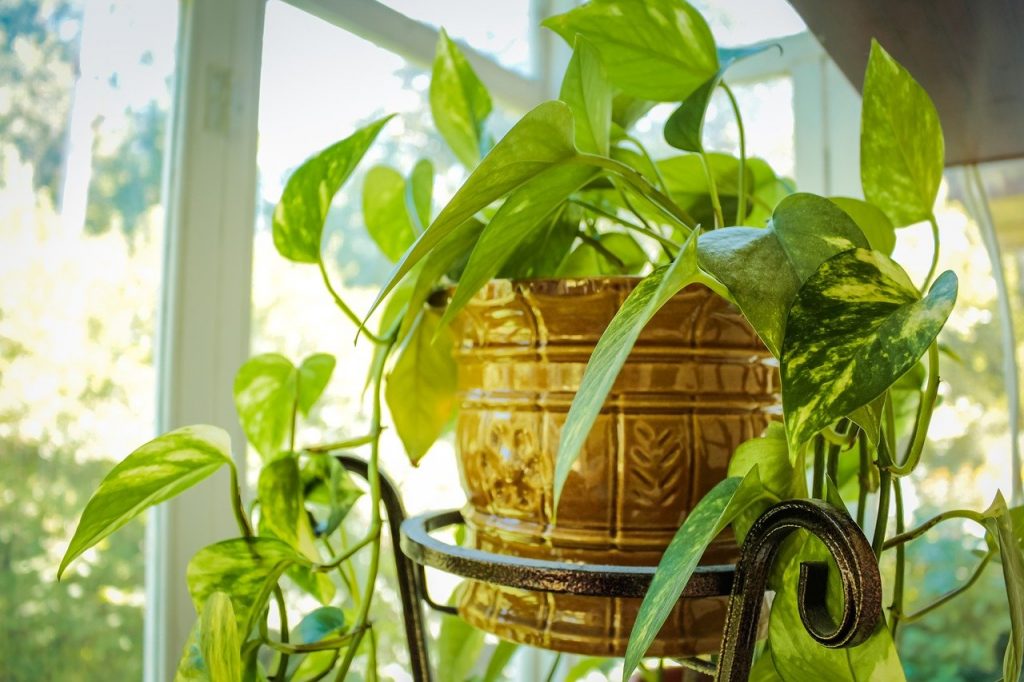
Trim leggy plants like this pothos, and you can replant the cuttings to create new plants. Photo: Photoshur / Pexels
Don’t give your indoor plants a buzz cut! Remove no more than 20 percent of the plant overall when you are pruning. If you really need to cut back more, do it in stages. Make your first trim, then wait a few weeks, and go back for a second pass. Otherwise your plant will try to protect itself and shut down any growth.
Pruning is different than “deadheading.” Deadheading means to remove flowers and blossoms from a plant after the blooms begin to die. Flowers consume energy from the plant. Removing flowers past their prime lets the plant direct its energy toward healthy growth including more flowers during spring and summer.
Save your healthy indoor plant cuttings. Many of them can be saved. Place the stem ends into a cup of water, and they will grow roots. You can then plant them and come next spring, you will have brand new indoor plants. If you have succulents, they are even easier to propagate. You can stick leaves into moist soil and a new succulent will sprout. Yay, free plants!
Let Your Plants Take A Winter Break
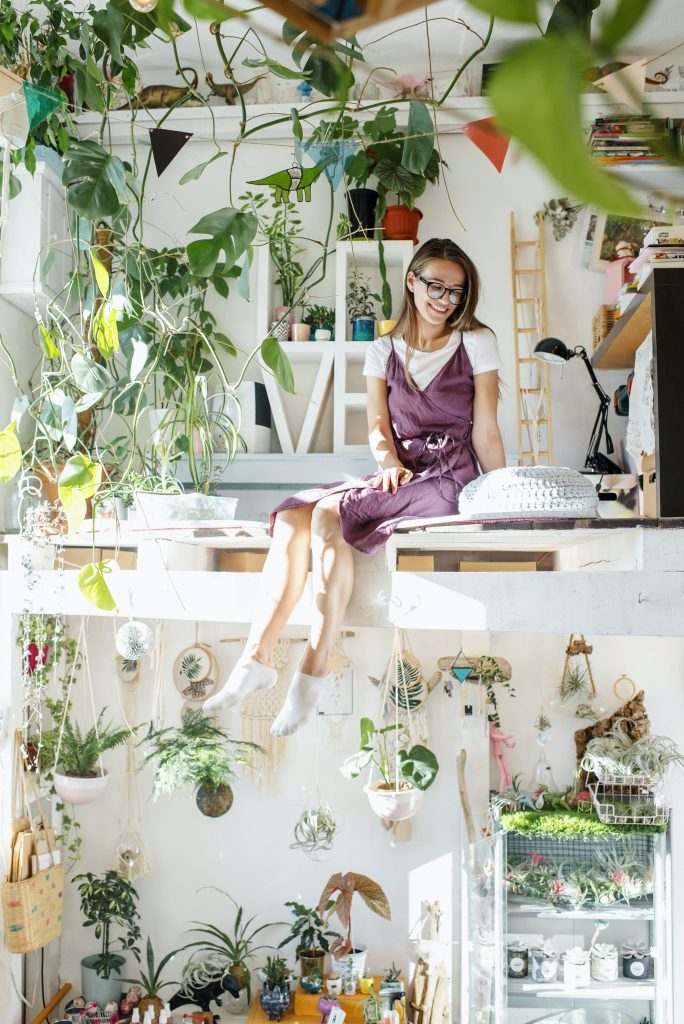
If you’ve got a lot of plants, you better get started on your fall plant maintenance! Photo: Ksenia Chernaya / Pexels
Avoid fertilizing your indoor plants after pruning them. Let them recover for at least a month or two. You may also want to cut back on watering since your plant’s need for water will be reduced when it is trimmed back.
It’s not a good idea to repot your indoor plants at the same time you trim them. This is a LOT of stress all at once for your plant to handle. Let your plant rest for several weeks. You might even want to wait until early spring to give your indoor plants a jump-start. Hint: cool new containers make GREAT holiday gifts.
There are just a few indoor plants you shouldn’t prune. Most varieties of orchids don’t like being pruned. Remove dead leaves only. Keep them watered and you should see them bloom again next year. Palm trees cannot be “topped”. That is where it grows from so if you cut off the top of a palm tree – it dies
Do you need help from the pros? Call on Good Earth Plant Company. We love to enrich your life with plants and we will make sure your plants are always looking their best year-round. We’re just a call or email away at 858-576-9300 or info@goodearthplants.com.

